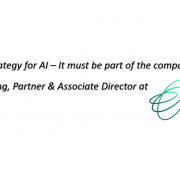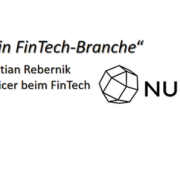Interview – Customer Data Platform, more than CRM 2.0?
Interview with David M. Raab from the CDP Institute
 David M. Raab is as a consultant specialized in marketing software and service vendor selection, marketing analytics and marketing technology assessment. Furthermore he is the founder of the Customer Data Platform Institute which is a vendor-neutral educational project to help marketers build a unified customer view that is available to all of their company systems.
David M. Raab is as a consultant specialized in marketing software and service vendor selection, marketing analytics and marketing technology assessment. Furthermore he is the founder of the Customer Data Platform Institute which is a vendor-neutral educational project to help marketers build a unified customer view that is available to all of their company systems.
Furthermore he is a Keynote-Speaker for the Predictive Analytics World Event 2019 in Berlin.
Data Science Blog: Mr. Raab, what exactly is a Customer Data Platform (CDP)? And where is the need for it?
The CDP Institute defines a Customer Data Platform as „packaged software that builds a unified, persistent customer database that is accessible by other systems“. In plainer language, a CDP assembles customer data from all sources, combines it into customer profiles, and makes the profiles available for any use. It’s important because customer data is collected in so many different systems today and must be unified to give customers the experience they expect.
Data Science Blog: Is it something like a CRM System 2.0? What Use Cases can be realized by a Customer Data Platform?
CRM systems are used to interact directly with customers, usually by telephone or in the field. They work almost exclusively with data that is entered during those interactions. This gives a very limited view of the customer since interactions through other channels such as order processing or Web sites are not included. In fact, one common use case for CDP is to give CRM users a view of all customer interactions, typically by opening a window into the CDP database without needing to import the data into the CRM. There are many other use cases for unified data, including customer segmentation, journey analysis, and personalization. Anything that requires sharing data across different systems is a CDP use case.
Data Science Blog: When does a CDP make sense for a company? It is more relevant for retail and financial companies than for industrial companies, isn´t it?
CDP has been adopted most widely in retail and online media, where each customer has many interactions and there are many products to choose from. This is a combination that can make good use of predictive modeling, which benefits greatly from having more complete data. Financial services was slower to adopt, probably because they have fewer products but also because they already had pretty good customer data systems. B2B has also been slow to adopt because so much of their customer relationship is handled by sales people. We’ve more recently been seeing growth in additional sectors such as travel, healthcare, and education. Those involve fewer transactions than retail but also rely on building strong customer relationships based on good data.
Data Science Blog: There are several providers for CDPs. Adobe, Tealium, Emarsys or Dynamic Yield, just to name some of them. Do they differ a lot between each other?
Yes they do. All CDPs build the customer profiles I mentioned. But some do more things, such as predictive modeling, message selection, and, increasingly, message delivery. Of course they also vary in the industries they specialize in, regions they support, size of clients they work with, and many technical details. This makes it hard to buy a CDP but also means buyers are more likely to find a system that fits their needs.
Data Science Blog: How established is the concept of the CDP in Europe in general? And how in comparison with the United States?
CDP is becoming more familiar in Europe but is not as well understood as in the U.S. The European market spent a lot of money on Data Management Platforms (DMPs) which promised to do much of what a CDP does but were not able to because they do not store the level of detail that a CDP does. Many DMPs also don’t work with personally identifiable data because the DMPs primarily support Web advertising, where many customers are anonymous. The failures of DMPs have harmed CDPs because they have made buyers skeptical that any system can meet their needs, having already failed once. But we are overcoming this as the market becomes better educated and more success stories are available. What’s the same in Europe and the U.S. is that marketers face the same needs. This will push European marketers towards CDPs as the best solution in many cases.
Data Science Blog: What are coming trends? What will be the main topic 2020?
We see many CDPs with broader functions for marketing execution: campaign management, personalization, and message delivery in particular. This is because marketers would like to buy as few systems as possible, so they want broader scope in each systems. We’re seeing expansion into new industries such as financial services, travel, telecommunications, healthcare, and education. Perhaps most interesting will be the entry of Adobe, Salesforce, and Oracle, who have all promised CDP products late this year or early next year. That will encourage many more people to consider buying CDPs. We expect that market will expand quite rapidly, so current CDP vendors will be able to grow even as Adobe, Salesforce, and Oracle make new CDP sales.
 You want to get in touch with Daniel M. Raab and understand more about the concept of a CDP? Meet him at the Predictive Analytics World 18th and 19th November 2019 in Berlin, Germany. As a Keynote-Speaker, he will introduce the concept of a Customer Data Platform in the light of Predictive Analytics. Click here to see the agenda of the event.
You want to get in touch with Daniel M. Raab and understand more about the concept of a CDP? Meet him at the Predictive Analytics World 18th and 19th November 2019 in Berlin, Germany. As a Keynote-Speaker, he will introduce the concept of a Customer Data Platform in the light of Predictive Analytics. Click here to see the agenda of the event.










Leave a Reply
Want to join the discussion?Feel free to contribute!